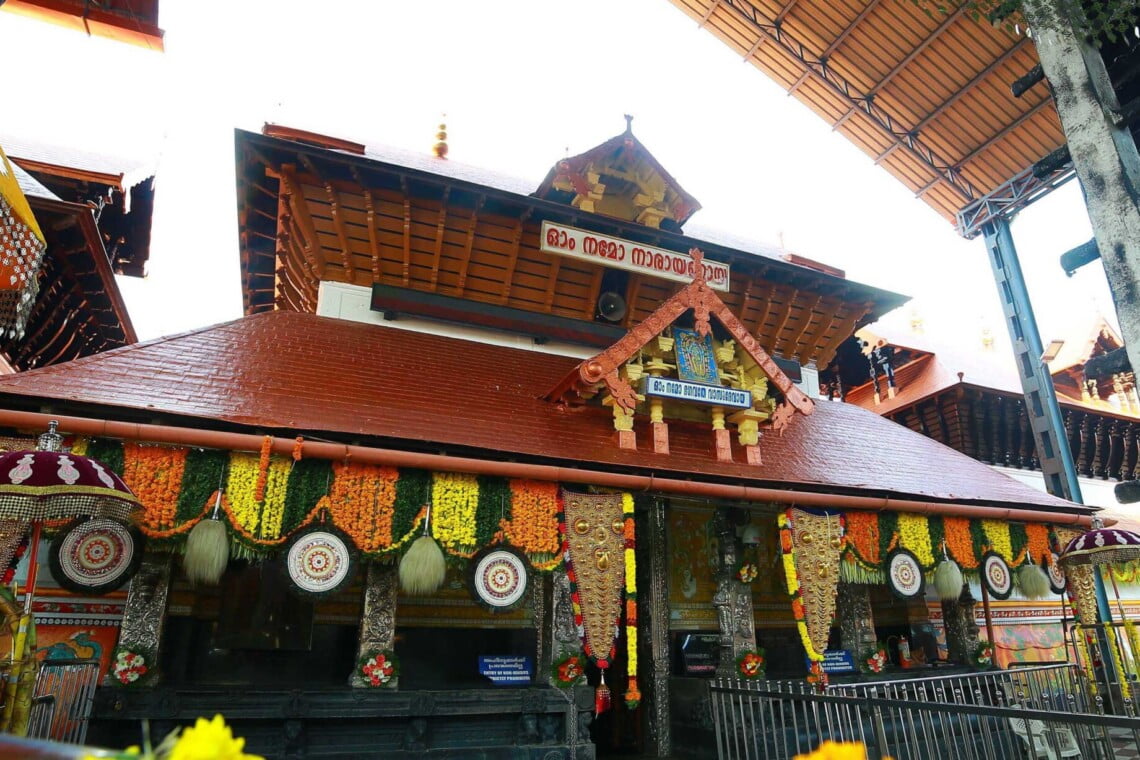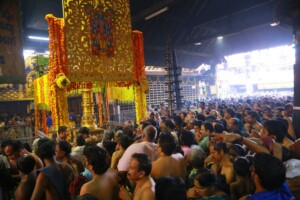Chembai Sangeetholsavam: A Musical Tribute to a Legendary Maestro
- August 30, 2024
- Pilgrimage
Kerala, often referred to as God’s Own Country, is not only renowned for its scenic beauty and rich cultural heritage but also... Read More

Nestled in the serene town of Guruvayur, Kerala, the Guruvayurappan Temple is a spiritual beacon that attracts millions of devotees from around the world. Known as the “Dwarka of the South,” this temple is dedicated to Lord Krishna, affectionately known here as Guruvayurappan. The origins of this sacred shrine are steeped in mythology, history, and devotion, making it one of the most revered pilgrimage sites in India.
The story of Guruvayur Temple begins with a celestial idol that embodies the essence of divine love and devotion. According to legend, this idol was originally worshipped by Lord Vishnu himself in Vaikuntha, his celestial abode. Later, it was passed down to Lord Krishna, who worshipped it in Dwarka. Before the destruction of Dwarka, Krishna instructed his devotee, Uddhava, to take the idol to a safe place where it could be worshipped during the Kali Yuga.
Following Krishna’s divine instructions, Uddhava sought the guidance of Guru, the preceptor of the Devas, and Vayu, the god of wind. Guru and Vayu embarked on a journey carrying the sacred idol, searching for the perfect place to enshrine it. After traversing through various landscapes, they reached the verdant land of Kerala. Here, they encountered a picturesque lake surrounded by lush greenery and decided that this serene spot was the ideal location for the idol.
With the blessings of Lord Shiva and Parvati, who were residing nearby as Lord Mahadeva and Goddess Parvati, Guru and Vayu consecrated the idol in the lake’s vicinity. The place where the idol was installed came to be known as Guruvayur, combining the names of Guru and Vayu, and the deity was revered as Guruvayurappan, the Lord of Guruvayur.
The temple’s origins date back to ancient times, and its growth over the centuries has been phenomenal. The earliest historical references to Guruvayur can be found in the 14th-century literary work, “Kokasandesam.” However, it is believed that the temple was established long before this period. The temple’s architecture, characterized by its traditional Kerala style, showcases intricate woodwork, murals, and carvings that narrate the tales of Krishna’s life and deeds.

Guruvayoorappan Temple is not just a place of worship but also a site of numerous miracles and legends. One such legend speaks of the temple’s survival during the raid by Tipu Sultan in the 18th century. Devotees believe that the deity himself protected the temple from destruction. Another popular story is about the temple elephant, Guruvayur Kesavan, who was known for his devotion and played a significant role in temple rituals.

Today, the Guruvayoorappan Temple stands as a testament to unwavering faith and devotion. It is a vibrant center of religious activities, with rituals and festivals that attract devotees throughout the year. The most notable festival is the Guruvayur Ekadasi, celebrated with grandeur and fervor. The temple’s daily rituals, including the unique “Seeveli” procession, where the deity is carried on a richly decorated elephant, add to the temple’s mystical charm.

The origin of Guruvayurappan Temple is a beautiful tapestry woven with threads of mythology, history, and divine intervention. It is a place where the past and present coexist harmoniously, offering solace and spiritual upliftment to countless devotees. As you step into the sacred precincts of Guruvayurappan Temple, you are not just entering a place of worship but embarking on a timeless journey of faith and devotion.
Experience premium comfort in Guruvayur without breaking the bank. Our fully furnished apartments are available for short-term stays. Book Now
Join The Discussion